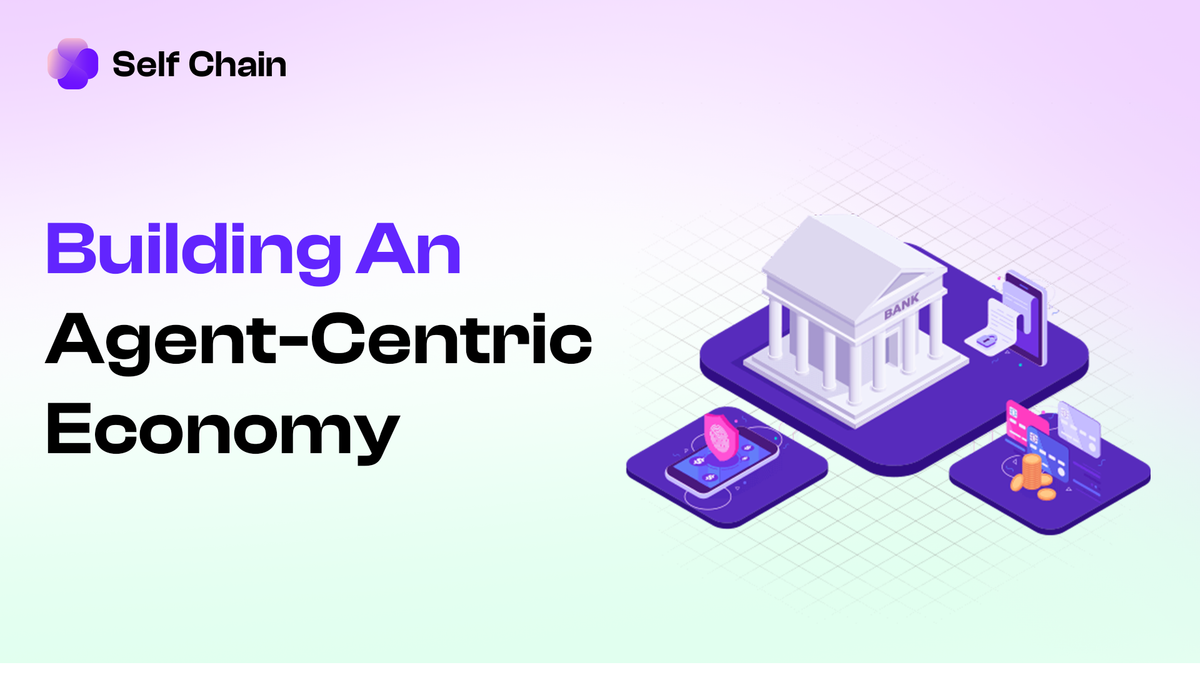Building an Agent-Centric Economy

The concept of autonomous agents; digital entities capable of analyzing information, making decisions, and executing actions on-chain, represents a step forward in how Web3 applications can serve users.
The challenge, however, lies not in defining what agents are, but in how effectively developers can optimize their design, deployment, and performance at scale.
Self Chain is positioning itself as an infrastructure layer that meets this need. Our modular architecture, autonomous wallet system, and cross-chain capabilities provide the essential foundations for developers who want to embed AI agents directly into their applications. This is what AgentFi represents: the practical realization of an economy powered by on-chain AI agents.
Equipping Agents with A Secure Operating Base
For agents to operate with true autonomy, they require the same baseline as any user: a secure wallet, access to liquidity, and the ability to interact across chains. Traditional private key systems were built for human custody and are poorly suited for automation.
Self Chain addresses this through programmable, keyless wallets powered by MPC-TSS and Account Abstraction.
These wallets eliminate the reliance on private key storage, while still ensuring verifiable security and recovery. Developers can decide the level of autonomy each agent should have. This flexibility means agents can be entrusted with executing tasks while still operating within restrictions defined by their creators. In either case, security and recovery mechanisms are embedded at the protocol level.
With this foundation, agents can transact directly, manage assets, and interact with protocols. They are not passive scripts but on-chain actors equipped to operate in real time.
Cross-Chain Autonomy
Blockchain activity is increasingly multi-chain, with liquidity, users, and opportunities spread across ecosystems. Agents designed to act on behalf of users cannot be constrained to a single network.
Self Chain addresses this by embedding cross-chain functionality into its everyday function. Through chain abstraction, agents gain access to over 100 chains without requiring complex bridging or siloed deployment. They can evaluate conditions across ecosystems, identify the most suitable paths, and execute actions seamlessly.
This capability is strengthened by sponsored gas fees and batch optimization, reducing operational friction and cost. For developers, this ensures that agents launched on Self Chain are chain-agnostic from the outset and capable of functioning wherever opportunities arise.
Intent-Centric Embedded Intelligence
Autonomy is not only about execution but also about understanding and decision-making. Agents need to interpret user goals, analyze market conditions, and adapt strategies dynamically.
Self Chain provides this intelligence layer through the Intent SDK and on-chain LLMs. Instead of relying on static instructions, developers can design agents that process high-level intents. An intent might be as simple as “swap one token for the other” or as complex as “optimize across multiple yield strategies.”
Liquidity without Fragmentation
For agents to act effectively, they need seamless access to liquidity across ecosystems. Self Chain provides this through a Searcher–Solver framework that works in tandem with its chain abstraction layer.
How it works:
Intent Searcher
- Receives the user’s intent via the LLM interface.
- Works with the Solver network to uncover optimal paths and offers.
- Seeks user confirmation before execution.
Intent Solver
- Receives requests from the Searcher.
- Partners with multi-chain bridges, aggregators, and dApps to design competitive strategies.
- Presents the most efficient route back to the Searcher.
- Executes once permission is granted, bundling transactions for speed and gas efficiency.
By combining this framework with chain abstraction, agents can extend their reach across more than 100 chains, executing with unified liquidity access rather than being constrained by fragmented pools. The result is faster, more efficient operations where agents can fulfill user intents competitively and at scale.
Conclusion
What distinguishes Self Chain is not a single feature but the integration of all these components into a coherent infrastructure for AI agents. By combining secure wallets, cross-chain reach, intent processing, liquidity access, and extensibility, it provides developers with a complete foundation for deploying agents that operate autonomously and efficiently.
The vision is not limited to a single sector. While DeFi provides immediate applications; from portfolio management to yield optimization, the same infrastructure can support agents in RWA, gaming, PayFi, and other digital coordination. In every case, the underlying requirement is the same: an environment where agents can function securely, adaptively, and at scale.
About Self Chain
Self Chain is the AI-powered intent layer for Web3, and a Modular L1 simplifying blockchain interactions. By combining keyless wallets (MPC-TSS/AA), intent-driven automation, and seamless multi-chain access, Self Chain eliminates complexity, making Web3 more intuitive, autonomous, and secure.
With Keyless Wallets and AI-powered intent execution, users can seamlessly onboard, manage assets, and interact with dApps without handling private keys or complex transactions. Self Chain’s AgentFi Infra enables autonomous on-chain AI agents to execute transactions, optimize DeFi strategies, and interact across ecosystems, while PayFi powers seamless, real-time blockchain payment systems, aligning with the evolving demands of the emerging global economy. Developers benefit from tools like the Intent SDK, Keyless Wallet SDK, and Account Abstraction Plugins, enabling the next generation of AI-driven applications with enhanced security and efficiency.
